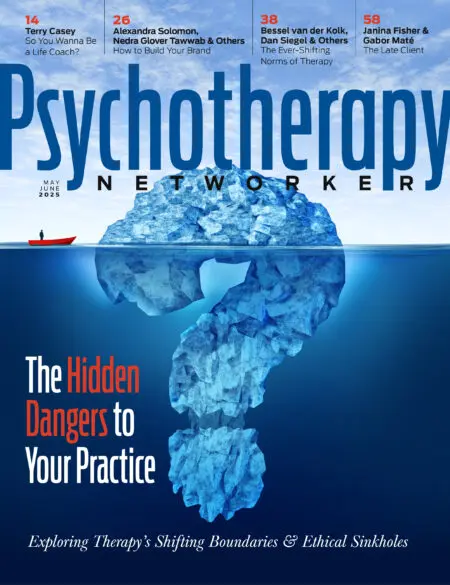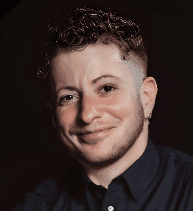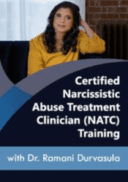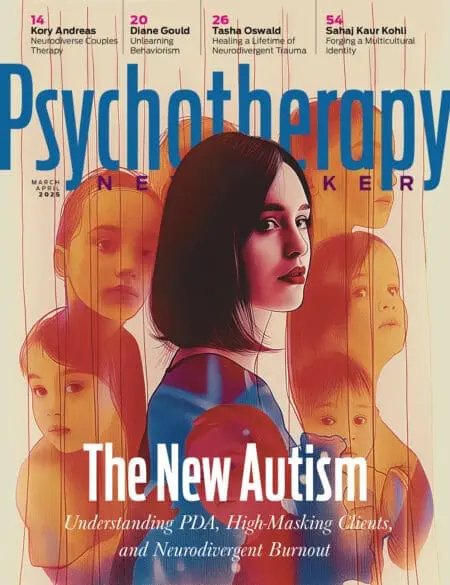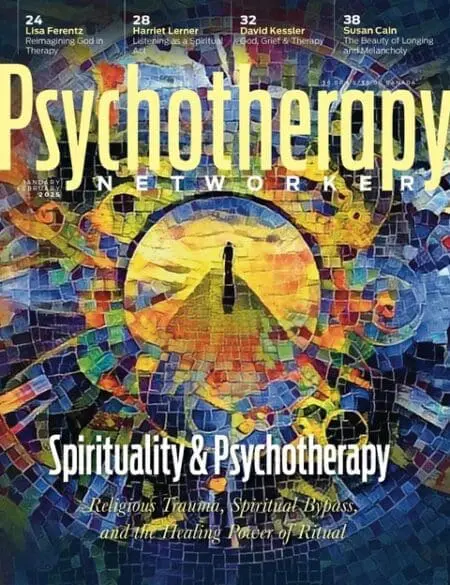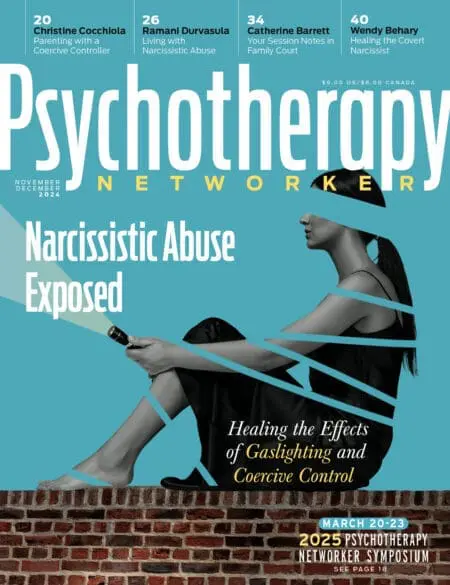In mid-January, I emailed the clients I normally see on Friday a few days beforehand to let them know I’d be out of the office that day. I’d spent almost the entirety of that day off sitting inside the Washington Passport Agency. Like many of those clients (most of whom are trans), as well as colleagues and other people I’m in community with, one of my biggest worries had become a reality: after Trump was sworn into office, I’d quickly have to renew my passport. I’m a transmasculine, nonbinary person who has medically transitioned, and if I’d waited to renew my passport by mail, the listed sex designation would have reverted from male back to female. I knew it could be difficult, and even dangerous, to travel if my passport said that I was female. It’s a predicament many other trans and nonbinary people now must face, among many other ongoing stressors and threats.
On January 20th, President Trump signed an executive order declaring that transgender people do not exist, proclaiming that the United States only recognizes two genders: male and female. Trump’s executive order redefines gender- and sex-related terminology and explicitly denies the existence of gender identity, erasing the legal recognition of trans, nonbinary, and intersex people. Federal agencies were effectively directed to discriminate against transgender people. Overnight, passports could no longer be renewed with an X (an option for nonbinary people and also used by some intersex people), nor with a sex designation different than that assigned at birth. This now puts many trans people in danger of being outed when traveling, and people who have an X on their existing passport are now at risk of being detained when reentering the country.
Trump also recently signed another series of executive orders targeting transgender people, seriously curtailing our right to education, identification documents, and workplace protections. He signed others that cut them off from military service, will lead to harsher treatment in prisons, and remove immigration protections. Other orders will impact public health information, research, and healthcare as it pertains to transgender people. In the January order, which banned transgender individuals from serving in the military and stopped military insurance coverage of gender-affirming care, we were described, as an entire group, as dishonorable, undisciplined, and dishonest. These executive orders are an attempt to end evidence-based, lifesaving, gender-affirming medical care for young adults across the country by threatening hospitals and community health centers that offer this care with the loss of federal funds.
The impact has been immediate and devastating. Some hospitals, including many in major metropolitan areas like DC, Boston, and New York, have preemptively ended gender-affirming care for patients under 19, despite the fact that these executive orders don’t change existing laws. Meanwhile, gender-affirming care is supported by every major medical association. In the case of minors, gender-affirming care like puberty blockers and hormone therapy are supported by parents, doctors, care teams, and the young people themselves. Gender-affirming medical care, which allows people to live in alignment with their gender, is not only used by transgender and nonbinary people, but also by intersex and cisgender individuals.
In February, young adults and their families protested outside a federal district court in Baltimore, where a hearing was taking place about whether to block the enforcement of the executive order to stop gender-affirming care. Judge Brandon Hurson issued a temporary restraining order against the executive order, a small win for young transgender people and their families.
Of course, discrimination has persisted. Public schools have faced threats to funding for affirming transgender students and teaching about racism. Public health information has been removed from government health websites and research, including research on supporting the health and mental wellbeing of LGBTQ individuals. Federal websites have been altered, with “LGBTQ” reduced to “LGB.” At the Stonewall National Monument, all references to transgender history have been removed. Their website now reads, “Before the 1960s, almost everything about living openly as a lesbian, gay, or bisexual (LGB) person was illegal.” Before the change, it included “transgender or queer (LGBTQ)” in the list. Effectively, history is being rewritten to exclude the trans and nonbinary individuals who were central to the movement.
Why Being Seen Matters
Unlike the young people I work with today, I didn’t always know about the existence of transgender people. Growing up in the late ‘80s and early ‘90s, I only heard negative sentiments about gay and lesbian people, and nothing about transgender people. I remember scribbling in my journal at night when I was about 10: Admit it! You’re a lesbian and you’re gross! I’d wanted to be the “boyfriend” of a girl in my class, and felt disgusted at myself for it. Without knowing that transgender and nonbinary people existed, I lacked the words to fully describe and understand myself. I was scared, and thought something was wrong with me. As I entered middle school, I became increasingly uncomfortable with myself, retreated inward, and began to struggle with food and my body image as I underwent puberty and my body became less aligned with who I knew I was.
In 10th grade, I switched to a local magnet school that focused on art and technology, where I took an interest in creative writing. There were some openly queer students at this new school, and I soon began feeling more comfortable expressing my gender nonconformity.
I watched any movie I could find that featured queer characters. I first realized transgender people existed after watching the 1999 movie Boys Don’t Cry, which tells the true, tragic story of Brandon Teena, a transgender man from Nebraska who was brutally raped and murdered by his girlfriend’s brother and friends when they discovered he was transgender. Teena was just 21 years old when he was murdered in 1993, the year I turned 10.
When I was 16, I began dating my first girlfriend. But still, I was afraid to tell my friends and family. So who could I tell? I decided to write a letter to my therapist and hand it to her in one of our sessions. I had no idea how she felt about people like me, and I was anxious to be accepted and fearful of being rejected. In my very long-winded letter, I told her I had a girlfriend and liked her a lot. I told her that I didn’t feel like I could tell anyone, and that I didn’t know what to do.
When she’d finished reading, she looked up at me and smiled. “Have you heard of San Francisco?” she asked. “That’s where I grew up.” She paused, and then added with enthusiasm, “All my friends were gay!” Not only was she friends with gay people, she went on to tell me, but she was friends with people who were gender-nonconforming too, like me. She wasn’t disgusted by me, and she didn’t reject me.
At the time, I didn’t have the language to understand that I was a transmasculine, nonbinary person. That understanding would come later, as would lifesaving, gender-affirming care. But just being seen and accepted as I was gave me a glimmer of hope.
My therapist encouraged me to connect with people I could relate to who shared my interests. Everything began to shift when I discovered a supportive community of young LGBTQIA+ people and mentors. Over the next several months, I went to concerts and pride events where I was surrounded by queer and gender nonconforming people. I found a weekly open mic night where I was encouraged to express my creativity, and where my girlfriend and I were celebrated for being ourselves. These spaces, as well as affirming therapy, helped me immensely.
Why Therapists Matter
Anti-trans executive orders and their sweeping ramifications threaten to prevent young LGBTQIA+ people from finding safe, identity-affirming spaces like the ones I found during my own formative years. On top of this, trans and nonbinary individuals are frequently confronted with news about murdered transgender people. In February, arrests were made for the murder of Sam Nordquist, a Black transgender man who’d been tortured by his captors for over a month before being killed. A lead investigator called the case one of the most horrific crimes he’d ever investigated. Nordquist’s murder reminds us that the erasure and villainization of trans people and the normalization of anti-trans sentiment puts trans people in great danger.
As therapists, we can and need to support young LGBTQIA+ people to survive this time of increased anti-trans hate crimes, government-sponsored erasure, and attacks against other historically marginalized groups (which includes many of our clients). We can draw on gender minority stress and resilience (GMSR) research to understand the impact of systemic harm on our clients and the benefit of resilience-building resources like peer support, community connectedness, gender-affirming care, family support, and role models. We can practice in accordance with the standard of care established by the World Professional Association of Transgender Health (WPATH)—a standard supported by every major medical association. We can learn from transgender and nonbinary clinicians with lived experience.
These supports, along with therapeutic approaches that validate their experiences, reduce distress, and attend to any co-occurring conditions, are essential. In my own work, this includes neurodiversity-affirming care, EMDR for PTSD, inference-based cognitive behavioral therapy for OCD, and multidisciplinary, gender-affirming eating disorders care.
I knew who I was as a child, even when I didn’t have the language to name it. Erasing the word transgender from public life tries to prevent trans people from understanding themselves and becoming who they are. Honoring the dignity and resilience of our trans clients means committing to evidence-based care, advocacy, and continued learning. It means creating spaces where they feel safe and validated. It means speaking up for them—and all oppressed groups—in and outside of the therapy room. Many trans people I know have shared disappointment that few or none of the cisgender people in their lives checked with them during these attacks. As therapists, we can be the people who validate the grief, pain, and fear of the current moment. We can also lean on each other in times of need. I myself have a community of trans and neurodivergent therapists which has been a valuable source of peer support and connection. Together, we can help keep our transgender clients safe and supported, and help build a future where they have the freedom to live fully and openly without fear.
Shir Wolf
Shir Wolf, LCSW-C, (they/he) is a queer, white, transmasculine and nonbinary licensed clinical social worker, EMDR-certified therapist, and EMDRIA-approved consultant. They specialize in the intersection of trauma, eating disorders, OCD, and neurodiversity+ gender affirming care for trans and neurodivergent kids, teens, and young adults, integrating EMDR, parts work, inference-based CBT, and gender-affirming eating disorder treatment in their practice, Wolf Therapy and Consulting.
